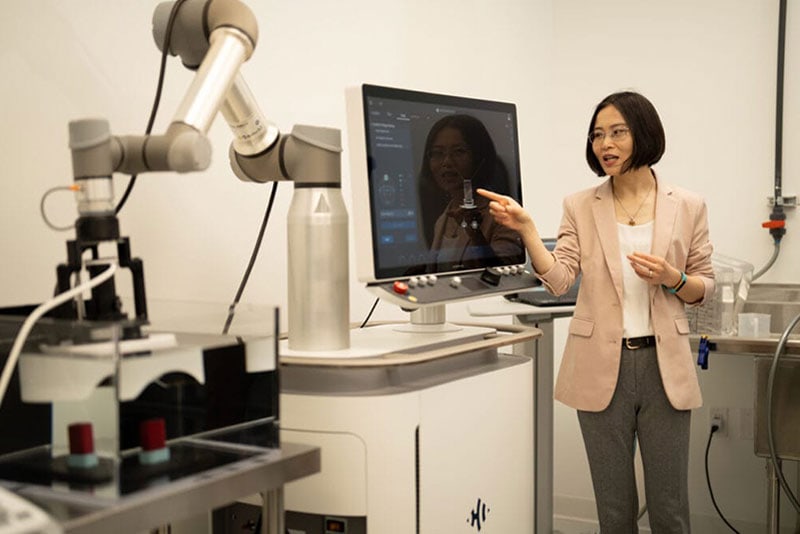
Cancer-killing bubbles
An FDA-approved treatment developed by U-M uses ultrasound waves to destroy liver tumors with few, if any, side effects.
Michigan Engineering experts envision a future where cancer treatment is incisionless, non-toxic, painless and low-cost. It begins with “histotripsy”— a technique pioneered by U-M engineers and doctors that harnesses soundwaves to attack cancer. Recently approved by the FDA for clinical use, histotripsy offers a promising alternative to intense cancer treatments such as surgery, radiation and chemotherapy.
Histotripsy uses targeted ultrasound waves to form microbubbles within the tumor. The forces created as those bubbles form and collapse cause the mass to break apart, killing tumor cells and leaving the debris to be cleaned up by the immune system. The best part? Histotripsy works without the toll that comes with more common cancer procedures, fewer concerns with drug compatibility, far shorter recovery time than surgery and less treatment discomfort.
“With histotripsy, we’re not destroying tumor antigens, we’re releasing them while killing the tumor cells,” said Zhen Xu, U-M professor of biomedical engineering and an inventor of the histotripsy approach. “Once they’re no longer hidden, the body can see them and attack them.”

Unlike chemotherapy and radiation that remove or destroy antigens, histotripsy destroys cancer cell walls. The approach leaves antigens in plain sight for the immune system to identify and use for targeted attacks on other cancer cells

Histotripsy’s creators also have plans for its use beyond tumor destruction.
“We want to leverage histotripsy’s immuno-stimulation effects and hopefully combine them with immuno-therapy or drug delivery,” Xu said. “That will move histotripsy from a local therapy into one that can treat tumors all over the body and eventually into a cure. In terms of the cancer treatment, that will be the next step, and I feel very excited about the potential.”